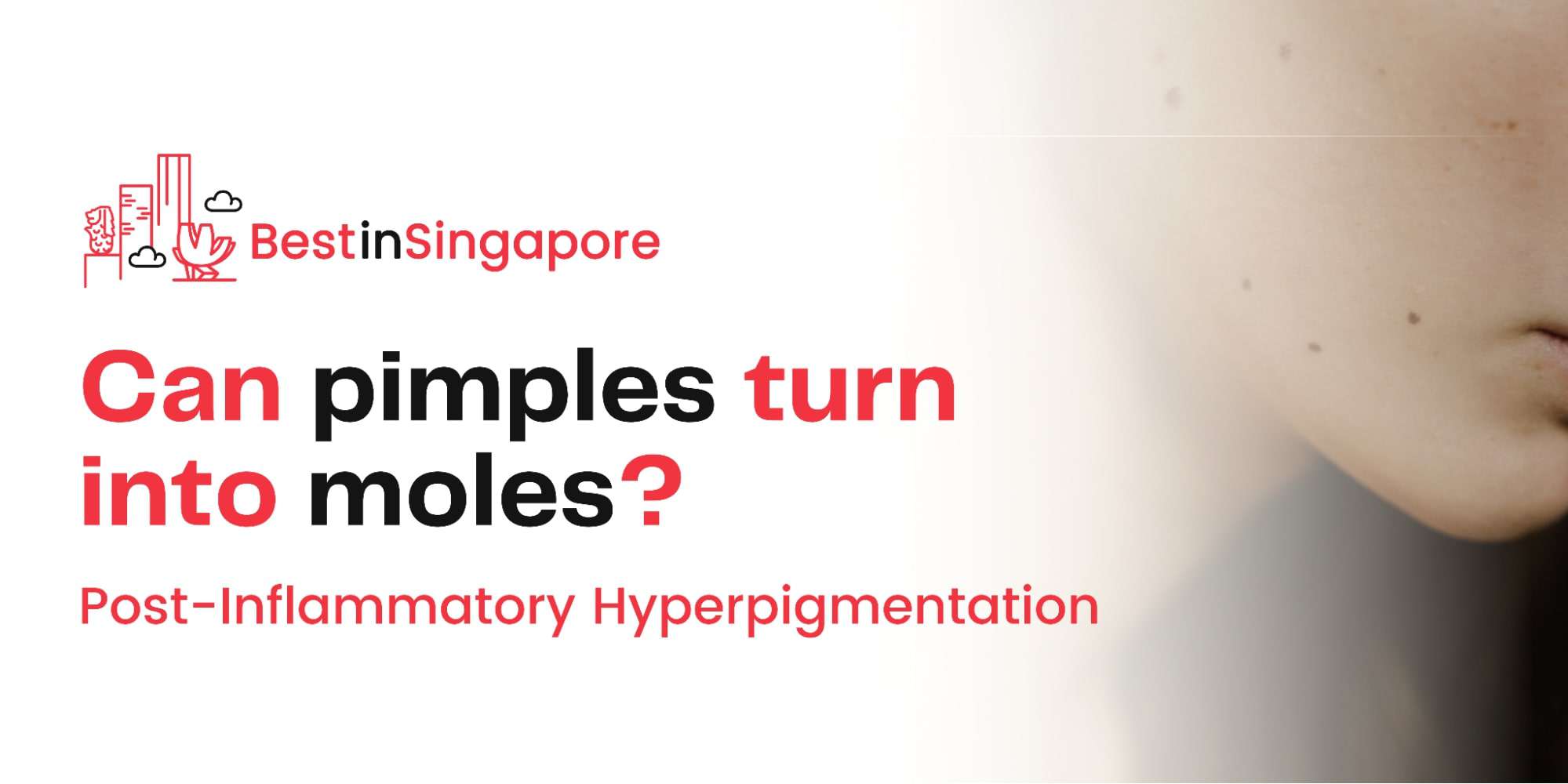A Quick Guide to Post-Inflammatory Hyperpigmentation
Are you seeing a brown mole-like mark where a pimple has healed? Find out below what aesthetic doctors say about this skin condition and how you can treat it.
Can pimples turn into moles?
Aesthetic doctors and general practitioners we talked to say no, it’s most likely not a mole; it’s a temporary skin condition called post-inflammatory hyperpigmentation (PIH).
This is a result of your skin producing excess melanin after trauma or irritation. Melanin is a natural skin pigment that also determines the color of our hair and eyes.
PIH mostly appears in shades of brown or black but can show up as blue-gray too.
Don’t worry too much, though, as it will disappear eventually, unlike some acne scars. However, it may take months without any treatment.
How to Treat Post-Inflammatory Hyperpigmentation
Maybe you’re tired of applying concealer to cover up PIH. Unfortunately, there’s no quick fix for it, but here are pigmentation treatments you can try to help boost the process of fading PIH:
1. Topical treatments
Hydroquinone
Hydroquinone lightens skin by disrupting melanocytes’ functions; melanocytes are the cells that produce melanin.
With regular use, the results will be visible after months. This may come in cream, serum, or gel form.
Azelaic Acid
Like hydroquinone, azelaic acid disrupts melanin production. In this case, it targets the enzyme tyrosinase, which signals the start of melanin production.
Results may be noticeable after three to four months. You can find this skin care ingredient in gels, foams, and creams.
Retinoids
Retinoids like retinol promote skin cell turnover or the replacement of old skin cells with new ones. With faster skin cell renewal, your complexion gets more even.
Retinol, like azelaic acid, is a tyrosinase-inhibitor, slowing down melanocytes’ melanin production.
It’s found in over-the-counter products often in low potencies and may take half a year to show visible results. You may find this in cream and serum form.
Salicylic Acid Chemical Peel
Salicylic acid has desmolytic properties, meaning it disrupts the connections between your cells. This property is useful in exfoliation where you shed the surface of the skin to encourage new skin cell production.
As a chemical peel, it’s not too strong and can suit any skin type.
Glycolic Acid Chemical Peel
Glycolic acid exfoliates a little deeper than salicylic acid, reaching up to the middle layer of the skin. Healthline reports that it erases PIH completely after six to eight sessions.
It can be combined with hydroquinone to boost the latter’s skin lightening properties.
Please make sure that when you do any chemical peel, it’s with the advice of a dermatologist or skin specialist.
Because exfoliation sheds some layers of your skin, your skin may be more sensitive to the sun afterward. Be careful to lessen sun exposure and apply sufficient sunscreen.
2. Medical Procedures
Laser Therapy
Also known as skin resurfacing, this procedure uses concentrated light. Lasers for this type of therapy can be classified into ablative and non-ablative.
Ablative lasers are wounding, taking out some layers of your skin, while non-ablative lasers are milder, using heat to encourage collagen production.
After skin is treated with an ablative laser, it heals and regrows tighter and with finer texture. Non-ablative lasers can also improve skin texture and even out skin tone but to a lesser degree.
Intense Pulse Light Therapy (IPL)
One popular type of non-ablative laser is Intense Pulsed Light (IPL). Without harming the skin’s surface, it breaks down skin cells in the dermis layer.
The body naturally removes the dead skin cells and grows fresh ones. Because it’s milder, this may take multiple sessions for results to be visible.
Dermabrasion
This procedure also involves removing the surface layers of your skin. However, it’s gentler than ablative lasers.
This is an in-office procedure, and your dermatologist will use a rotating handheld abrasive tool called a dermabrader. Like most exfoliating techniques, it works by shedding old skin cells and encouraging the growth of fresh ones.
Before trying any of these treatments, remember to discuss with your doctor what’s suitable for your skin. Check out our resources below for more skin care tips.


